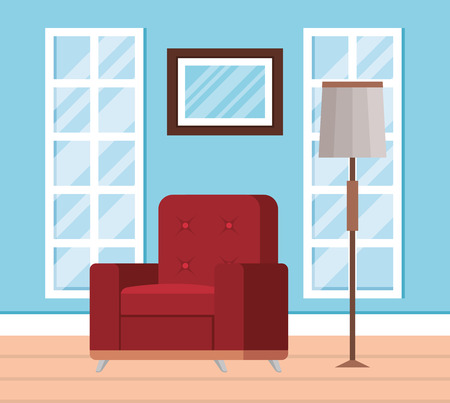Introduction to Curated Looks and Layered Lighting
In the UK, interiors are more than just spaces—they are thoughtful expressions of heritage, personality, and taste. The British tradition of curated looks, where each object has a story or provenance, is deeply rooted in a culture that values both history and innovation. Within these carefully composed environments, lighting plays an unsung yet transformative role. Layered lighting—an approach that combines ambient, task, and accent illumination—enables homeowners and designers to not only see but truly experience art and architecture in their best light. This article explores how the British appreciation for well-curated interiors finds its perfect partner in layered lighting schemes, elevating paintings, sculptures, architectural features, and even the subtle textures of a Georgian cornice or Victorian moulding. By understanding the interplay between light and space, one can create interiors that are as inviting as they are visually compelling—a hallmark of British design sensibility.
2. The British Context: Heritage Buildings and Contemporary Galleries
Britain’s architectural landscape is a nuanced tapestry, weaving together stately heritage buildings and cutting-edge galleries. When curating looks with layered lighting to highlight art and architecture, the interplay between classic structures—such as Georgian townhouses—and modern exhibition spaces becomes central to the British aesthetic. This fusion demands an understanding of both historical reverence and contemporary innovation, reflecting local sensibilities in the presentation of art.
The Dual Identity of British Spaces
Many British institutions house collections within centuries-old walls, their ornate mouldings and grand staircases echoing a storied past. In contrast, new-build galleries like Tate Modern embrace minimalism and open-plan layouts, prioritising flexibility for evolving exhibitions. Layered lighting must therefore be adaptable, carefully balancing respect for period features with the demands of modern display techniques.
Cultural Nuances in Lighting Approach
Layered lighting in Britain goes beyond function—it serves as a cultural bridge. For example, in a Georgian townhouse-turned-gallery, conservation-grade spotlights may accentuate intricate cornices or oil paintings without disturbing original wood panelling. Meanwhile, in contemporary spaces, programmable LED systems might animate installations or create dramatic focal points. The table below summarises key considerations:
| Feature | Heritage Buildings | Contemporary Galleries |
|---|---|---|
| Architectural Focus | Mouldings, fireplaces, historic details | Clean lines, flexible partitions |
| Lighting Priorities | Conservation, subtle accentuation | Dynamic effects, adaptability |
| Cultural Expectation | Respect for legacy, understated elegance | Innovative engagement, bold statements |
| Common Fixtures | Track lights, picture lights, wall washers | Recessed LEDs, colour-tunable luminaires |
Navigating Historic Constraints and Modern Demands
Retrofitting layered lighting into listed buildings often involves navigating regulations that protect original fabric. British designers are adept at discreetly integrating modern technology—like wireless controls or low-profile fittings—to enhance both artwork and architecture without compromising heritage value. In contrast, purpose-built galleries provide a blank canvas for experimental schemes that respond to ever-changing exhibitions and visitor expectations.

3. Understanding Layered Lighting: Ambient, Task, and Accent
Layered lighting is the cornerstone of any thoughtfully curated interior, especially when it comes to showcasing art and architectural features in a British context. By combining three primary layers—ambient, task, and accent lighting—you can orchestrate a harmonious interplay between function and atmosphere, enhancing both aesthetic appreciation and usability.
Ambient Lighting: Setting the Scene
Ambient lighting serves as the foundational layer, casting a gentle glow that fills the room and establishes its overall mood. In grand Georgian townhouses or contemporary London flats alike, this might take the form of elegant pendant fixtures or discreet recessed lights that provide consistent illumination without overpowering other elements. When navigating spaces like the Tate Britain’s galleries or period homes with intricate cornices and mouldings, ambient light ensures visitors can comfortably move through the space while allowing architectural nuances to subtly emerge.
Task Lighting: Purposeful Precision
Task lighting introduces focused illumination where practical activities demand clarity—think reading a catalogue beside an Edwardian fireplace or delicately restoring watercolours in a private collection. Anglepoise desk lamps, a design classic with British roots, exemplify this approach by providing adjustable brightness exactly where needed. In stately homes, wall-mounted picture lights often serve double duty: illuminating family portraits for detailed viewing while blending seamlessly with historic interiors.
Accent Lighting: Drawing the Eye
Accent lighting is where curation becomes artistry. This layer highlights specific artworks or architectural details—a spotlight on a Turner seascape, or LED uplights tracing the ribbed arches of a Victorian conservatory. Museums such as the National Gallery employ adjustable track lights to bring out subtle brushwork and gilded frames, while private collectors may use concealed strip lighting to dramatise alcoves or ornate cornicing. The result is an intentional hierarchy of visual interest, guiding guests’ attention to curated focal points.
The Interplay of Layers in British Contexts
What distinguishes layered lighting in British settings is its sensitivity to context—whether respecting the patina of heritage properties or embracing modern minimalism. By deftly balancing ambient, task, and accent sources, you can create dynamic environments that honour both the artwork and architecture on display. This nuanced approach not only elevates individual pieces but also enriches the cultural narrative woven throughout each space.
4. Techniques for Showcasing Art: Spotlights, Picture Lights, and Beyond
In British interiors, where tradition meets contemporary flair, the art of illuminating artwork is a nuanced craft. Whether adorning the walls of a Georgian townhouse or a modern flat in London, selecting the right lighting technique can elevate both paintings and architectural features. Let’s delve into the most popular methods and fixtures favoured across the UK for accentuating art, blending timeless elegance with innovative technology.
Spotlights: Precision and Drama
Spotlights have become a mainstay in galleries and homes alike, prized for their ability to direct focused beams onto specific pieces. In the UK, recessed spotlights with adjustable heads are particularly popular, allowing homeowners to adapt the angle and intensity as collections evolve. Dimmable options provide flexibility, enabling subtle mood shifts from day to evening gatherings. The result is an interplay of light and shadow that adds depth and drama—a nod to Britain’s penchant for atmospheric interiors.
Picture Lights: A Nod to Tradition
The quintessential picture light remains a favourite in period properties. These slender fixtures sit above or alongside frames, casting an even wash over canvases without overpowering delicate brushwork. Brass finishes are especially beloved in heritage homes, echoing classic British décor while offering gentle illumination that preserves original hues. Advances in LED technology mean modern versions now combine old-world charm with energy efficiency—an essential consideration in today’s eco-conscious society.
Contemporary Adjustable LEDs: Versatility Meets Innovation
Modern British homes increasingly favour adjustable LED solutions for their versatility and sleek design. Track lighting systems enable multiple works to be showcased simultaneously, with each fitting easily repositioned as new acquisitions are displayed. Colour temperature controls allow for customisation—warmer tones enhance traditional oil paintings, while cooler settings flatter contemporary prints or sculptures. This adaptability reflects the dynamic nature of UK interiors, where tastes often blend eclectic influences.
Comparison of Popular Art Lighting Methods in the UK
| Method | Typical Use | Aesthetic Appeal | Flexibility |
|---|---|---|---|
| Spotlights | Highlighting individual pieces or features | Dramatic; creates depth with focused beams | Highly adjustable (angle & intensity) |
| Picture Lights | Traditional framed artwork | Classic; discreet and elegant illumination | Fixed position; some dimmable options |
| Adjustable LEDs/Track Systems | Larger collections or changing displays | Sleek; suits modern or eclectic settings | Extremely versatile (position & colour temp) |
Cultural Nuances in British Art Lighting Choices
The selection of fixtures often mirrors wider cultural values: a respect for heritage balanced by a willingness to embrace innovation. From ornate picture lights in stately homes to minimalist track lighting in urban lofts, layered lighting not only highlights art but also reveals something of Britain’s evolving design identity.
5. Enhancing Architectural Features Through Lighting
In the British context, architecture tells a layered story of centuries—Georgian cornices, Victorian fireplaces, and the crisp silhouettes of contemporary minimalism all coexist within homes and public spaces. Layered lighting serves as a tool not merely for illumination but for curating the unique narratives embedded in these features. By deploying a mix of ambient, accent, and task lighting, one can reveal the subtle shadows cast by ornate plasterwork or accentuate the clean lines of a modern staircase. For example, uplighting can draw attention to intricate period cornices in a Notting Hill terrace, while picture lights subtly frame the stately symmetry of a Regency fireplace in a Bath townhouse. Meanwhile, in modern spaces such as London’s gallery-inspired flats or civic libraries, discrete LED strips or recessed spotlights celebrate architectural purity by tracing minimalist contours without overwhelming them.
Layered Lighting: Bridging Heritage and Modernity
The art lies in respecting both legacy and innovation. In British interiors, where heritage is treasured yet contemporary design thrives, layered lighting offers flexibility. Dimmable wall washers bring warmth to exposed brickwork in converted warehouses, while pendant clusters above kitchen islands carve visual zones in open-plan layouts. This interplay enables each feature—from Tudor beams to urban steel balustrades—to be experienced anew as daylight fades and evening descends.
Contextual Sensitivity: A British Perspective
British sensibility leans towards understatement and nuance rather than ostentation. Therefore, the curated use of light must enhance without overpowering—a nod to the country’s appreciation for characterful restraint. Whether highlighting a grand Edwardian staircase in a civic building or adding intimacy to an Arts & Crafts alcove in a countryside retreat, layered lighting is essential for drawing out the authentic essence of British architecture.
6. Case Studies: London Townhouses and Local Galleries
Layered lighting, as an artful tool, finds its most compelling expressions within the nuanced interiors of London’s historic townhouses and contemporary galleries. These settings reveal how a carefully orchestrated interplay of ambient, accent, and task lighting can elevate both architectural features and cherished artworks, lending each space a curated sense of character.
Elegant Georgian Townhouse in Bloomsbury
Consider a restored Georgian townhouse in Bloomsbury, where original cornices and fireplaces provide a rich architectural backdrop. Here, designers often employ recessed downlights for soft general illumination, paired with picture lights that gently spotlight oil paintings along the stairwell. Subtle uplighters tucked behind period mouldings cast a warm glow upwards, drawing attention to intricate ceiling roses. This layered approach ensures that every historical element is accentuated without overwhelming the eye—a signature of British restraint and sophistication.
Modern Gallery Spaces in Shoreditch
In contrast, contemporary galleries across Shoreditch demonstrate how flexible track lighting systems can be used to highlight ever-changing exhibitions. Adjustable LED spotlights offer precision when illuminating sculptures or mixed-media installations, while diffuse wall washers provide an even wash over gallery walls, ensuring that each piece receives its due prominence. The interplay between focused beams and ambient washes creates visual rhythm and guides visitors through curated viewing journeys, subtly echoing the avant-garde energy of East London’s creative scene.
Curated Atmospheres: A British Sensibility
Both residential and public spaces in the UK often embrace a ‘less is more’ philosophy—eschewing harsh overhead glare in favour of gentle layering. In Mayfair’s private homes, for example, table lamps with silk shades sit alongside concealed LED strips beneath bookshelves, creating intimate pools of light perfect for evening gatherings. Likewise, independent galleries in Hackney frequently integrate daylight with artificial sources, using translucent blinds to modulate natural light and enhance the artwork’s true colours throughout the day.
The Power of Thoughtful Placement
These real-world examples underscore a key tenet: it’s not merely the fixtures themselves but their considered placement and combination that craft a uniquely British sense of place. Layered lighting serves as both a functional necessity and an aesthetic statement—transforming everyday environments into spaces where art and architecture are not just seen but truly experienced.
7. Recommendations and British Lighting Brands
When it comes to crafting curated looks through layered lighting, selecting the right products and partners is as important as your design vision. The UK is home to a host of reputable lighting brands renowned for their quality, craftsmanship, and understanding of British interiors. Here are some practical recommendations to achieve that bespoke, gallery-inspired finish in your home or project.
Choose Quality Over Quantity
A thoughtful approach to lighting involves investing in fewer, higher-quality fixtures rather than overloading spaces with generic solutions. British brands such as Original BTC, celebrated for their hand-assembled fittings in Oxfordshire, or Bert Frank, known for contemporary designs with an Art Deco twist, offer timeless pieces that elevate any setting.
Embrace Versatility and Local Craftsmanship
Look for lighting ranges that provide flexibility—adjustable spotlights from Heathfield & Co. or wall washers by Astro Lighting can be tailored to accentuate art or highlight architectural details. Many UK companies champion local manufacturing, ensuring both sustainability and support for British artisanship.
Layering Made Simple
For ambient foundations, brands like John Cullen Lighting are industry leaders in residential and heritage projects, offering expertise in layering schemes with downlights, uplights, and discreet linear LEDs. Pair these with decorative pendants or sconces from Tom Dixon, whose sculptural forms double as design statements.
Smart Solutions for Modern Living
Embrace smart controls with UK-based systems like Lutron UK, which allow you to set scenes that adapt throughout the day—perfect for shifting focus from artwork to architectural elements at the touch of a button.
In summary, achieving a curated look is about blending artistry with technical know-how. Consult local showrooms or independent lighting designers who understand British style nuances and can recommend trusted suppliers. By selecting established UK brands and embracing layered strategies, you’ll illuminate your art and architecture with sophistication—and a distinctly British sensibility.

